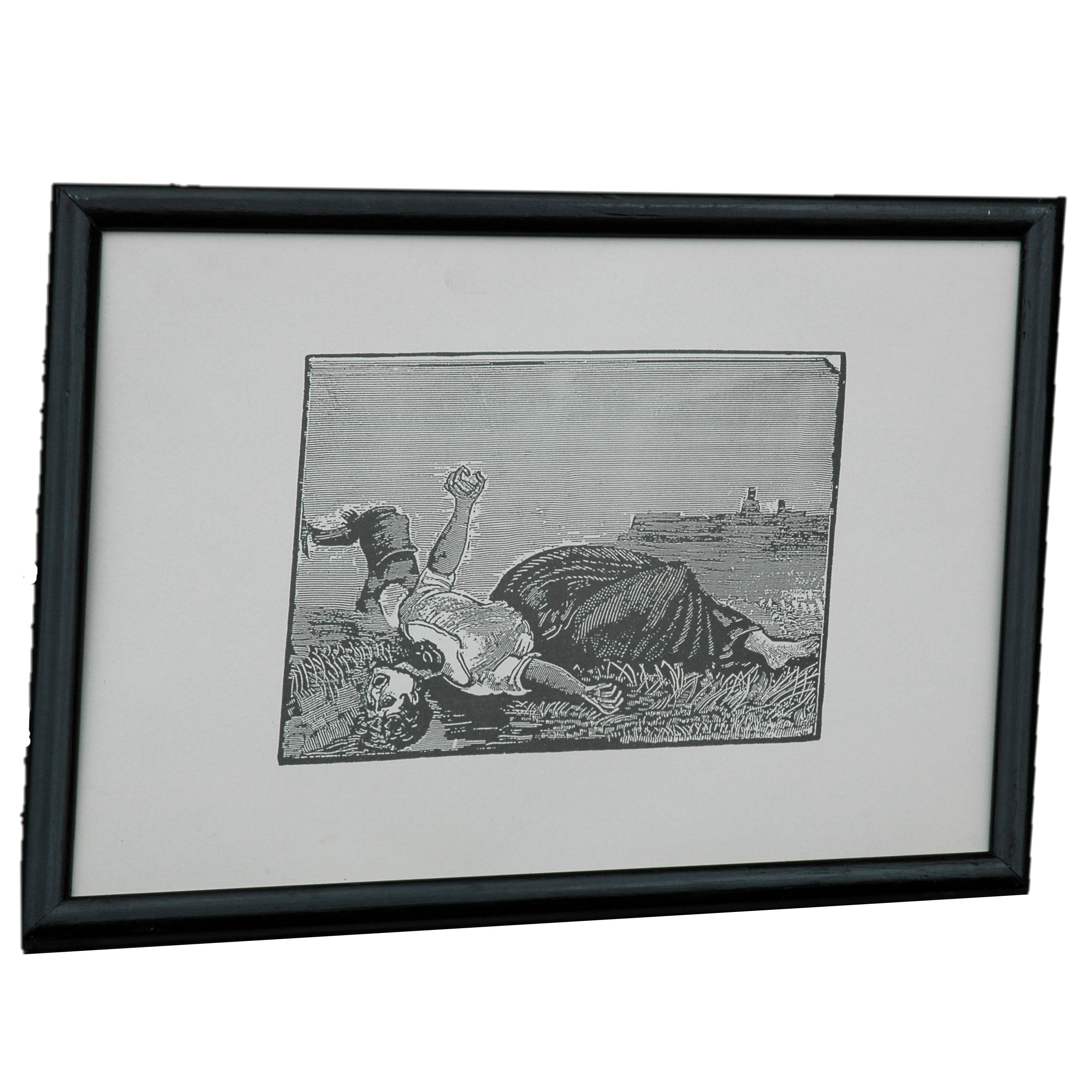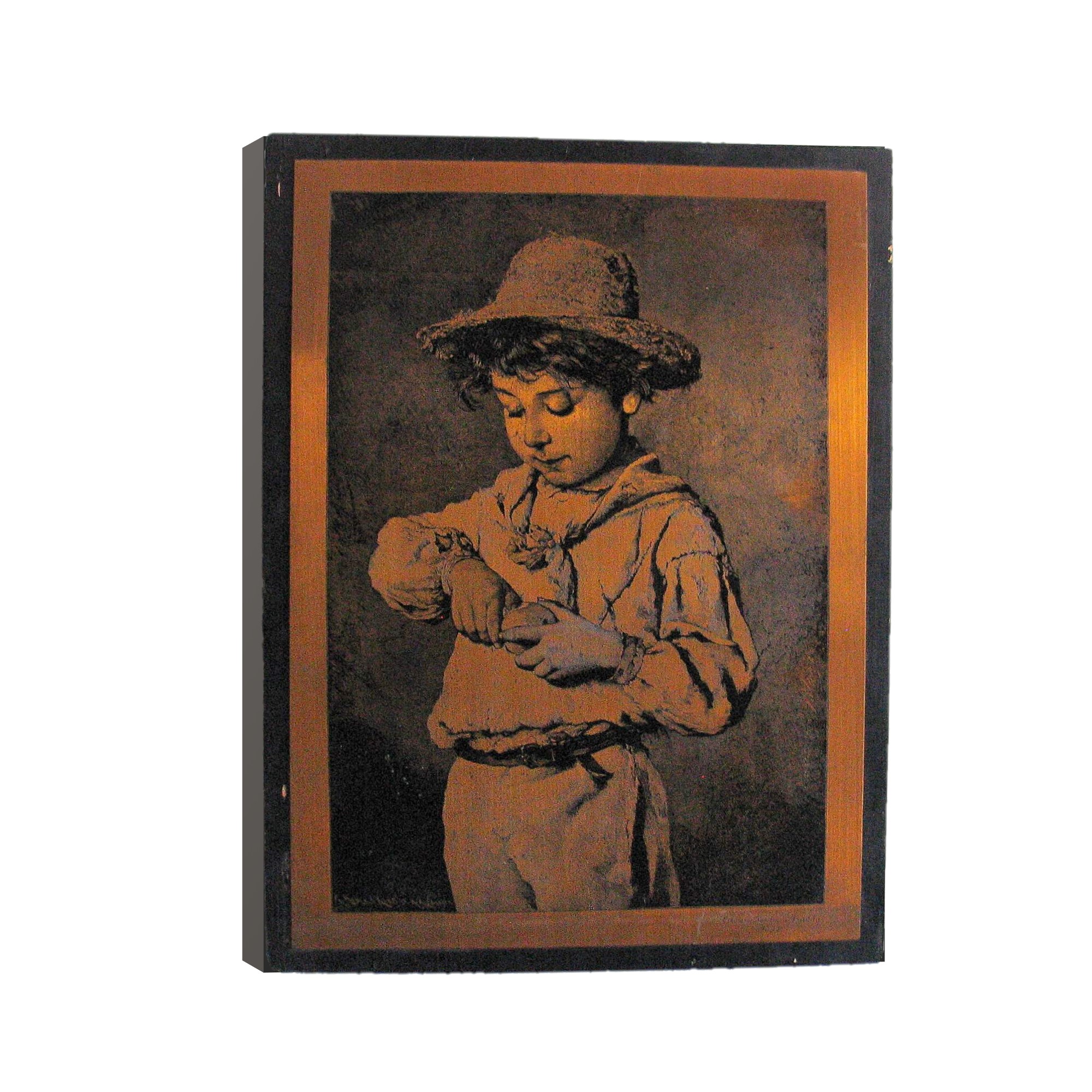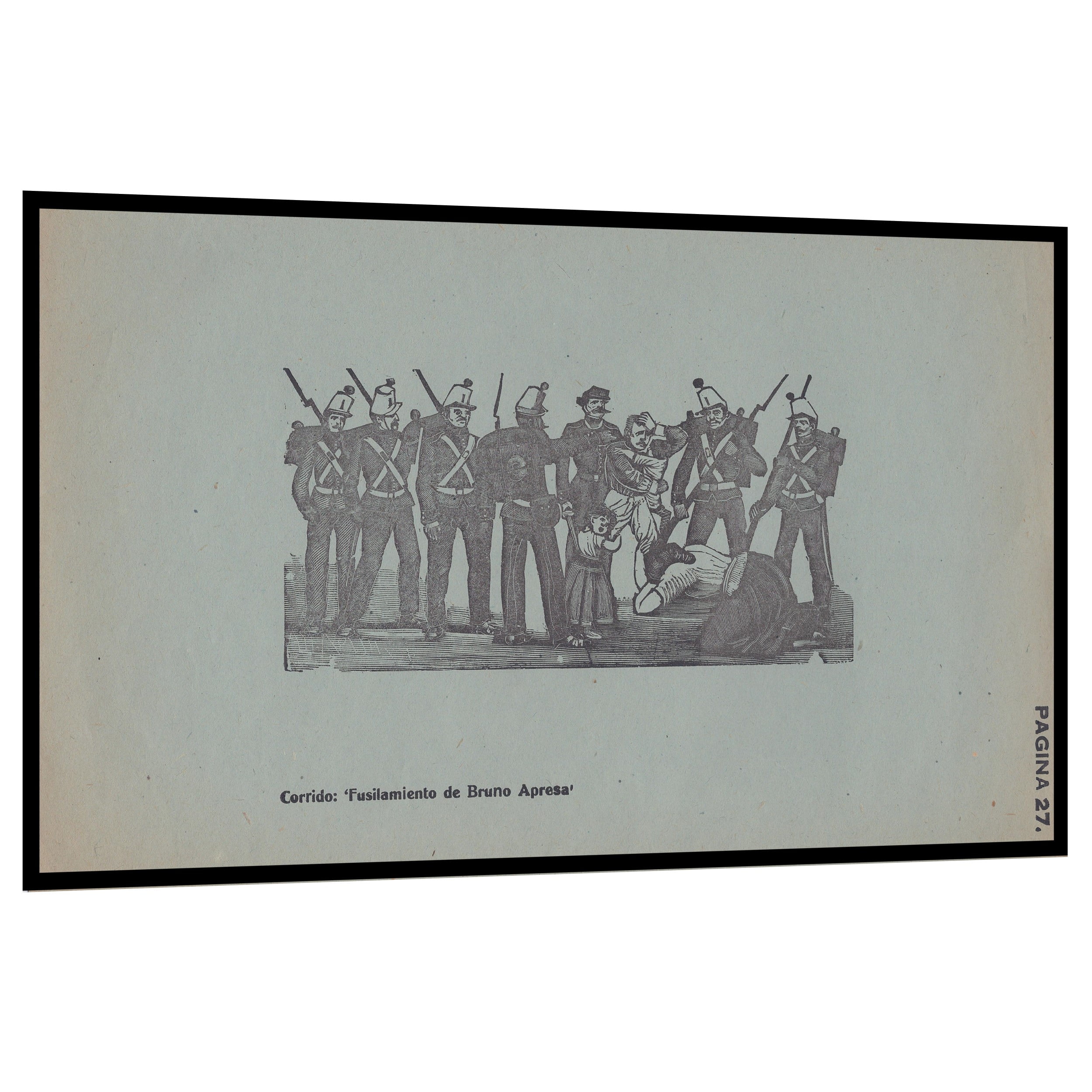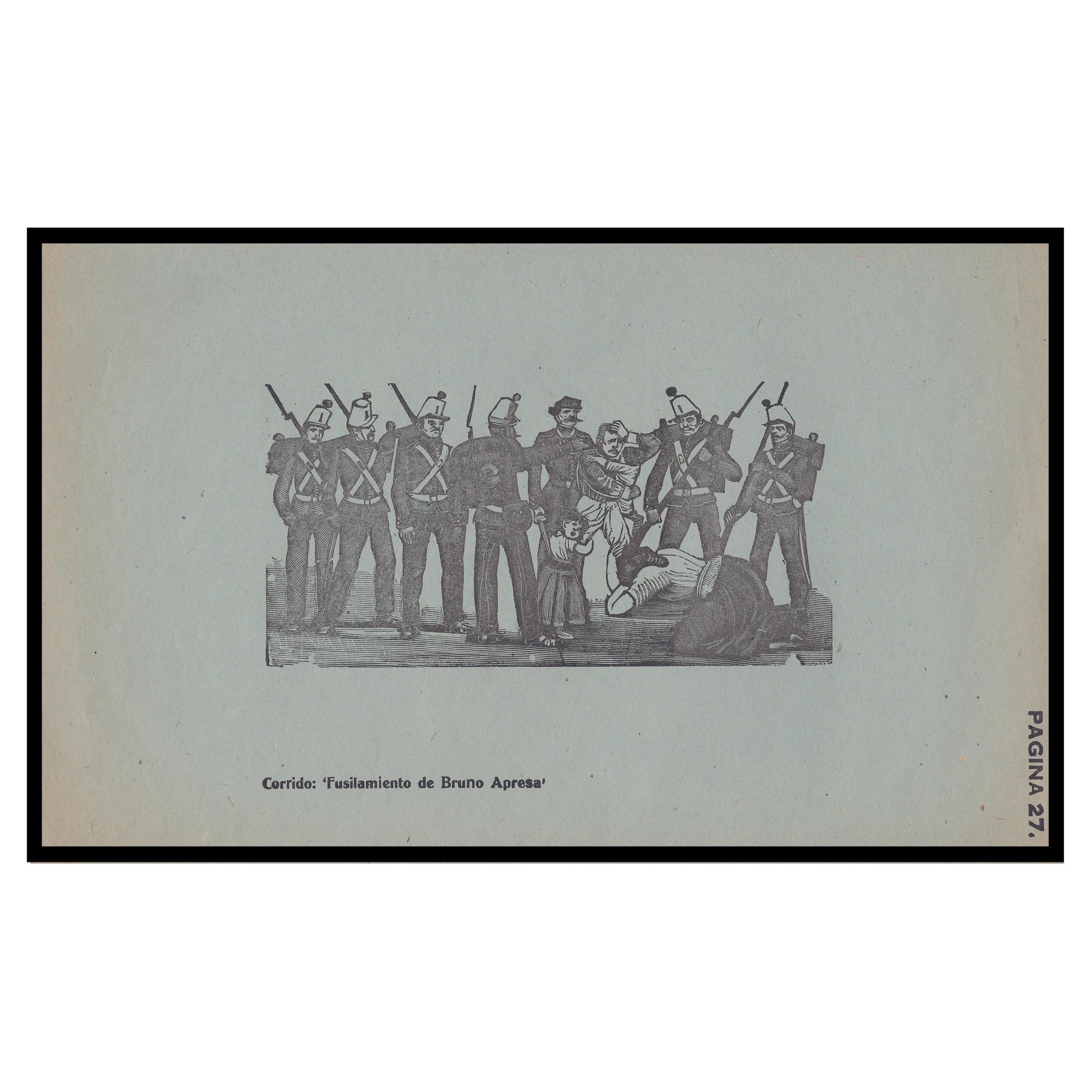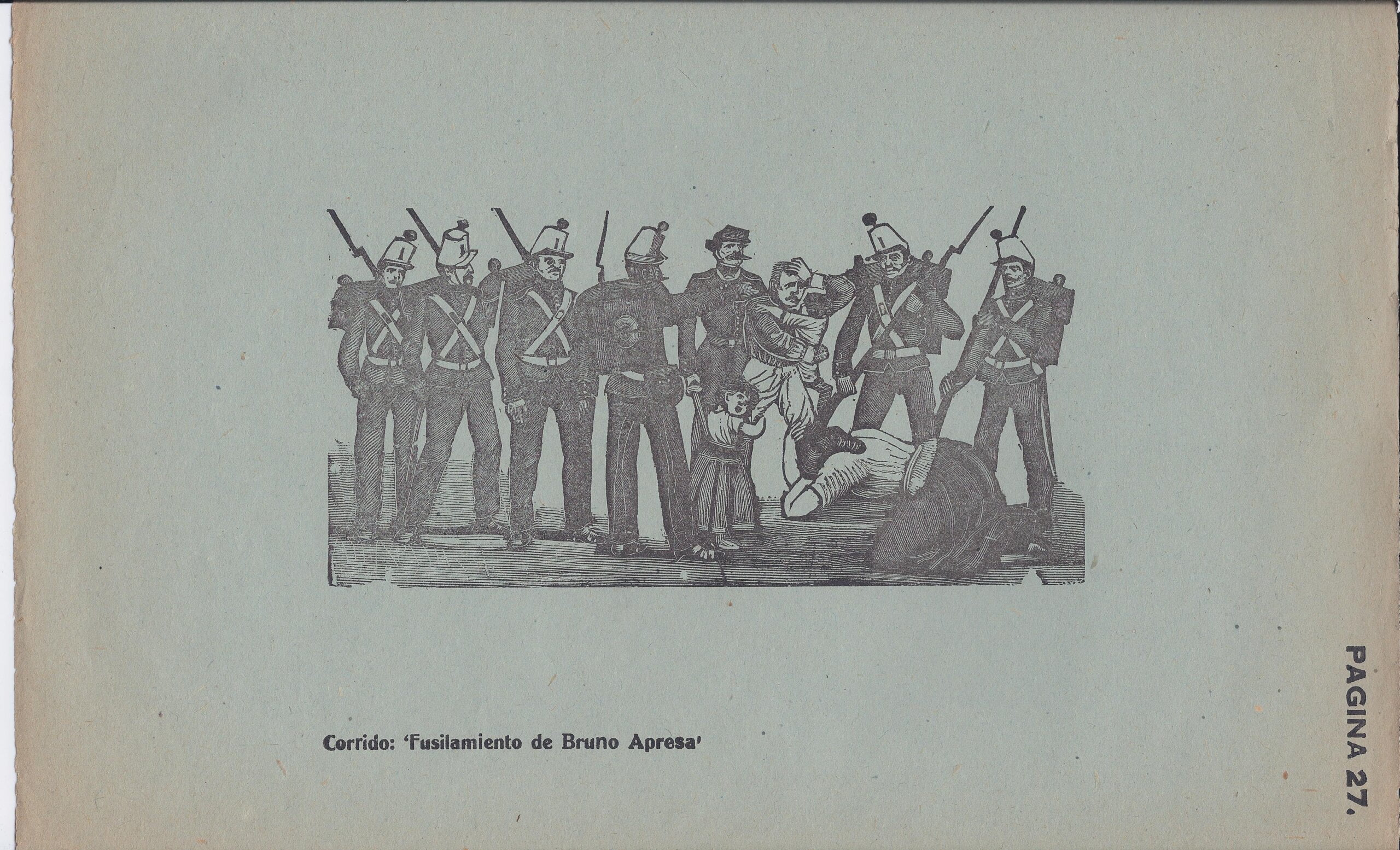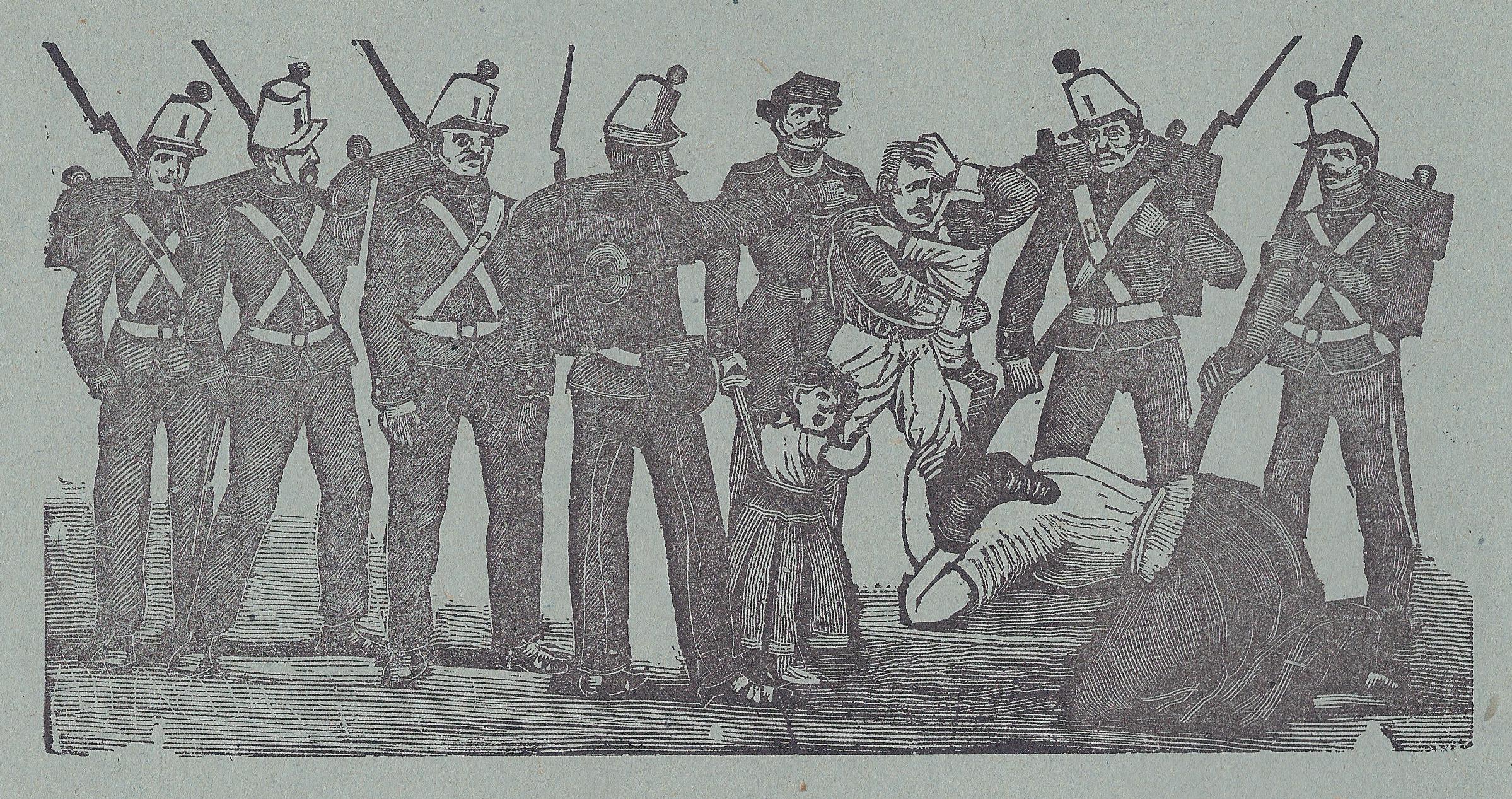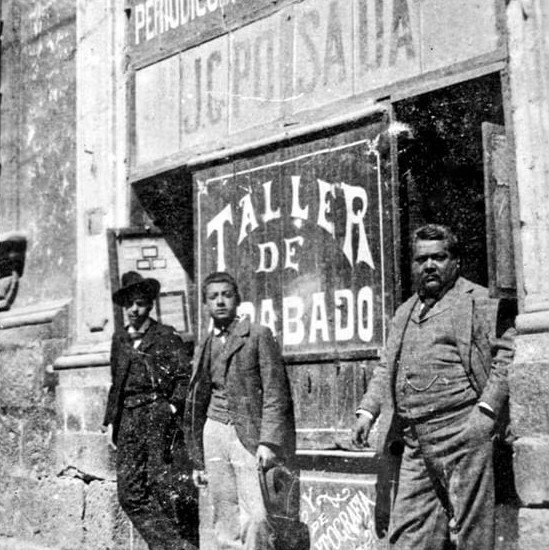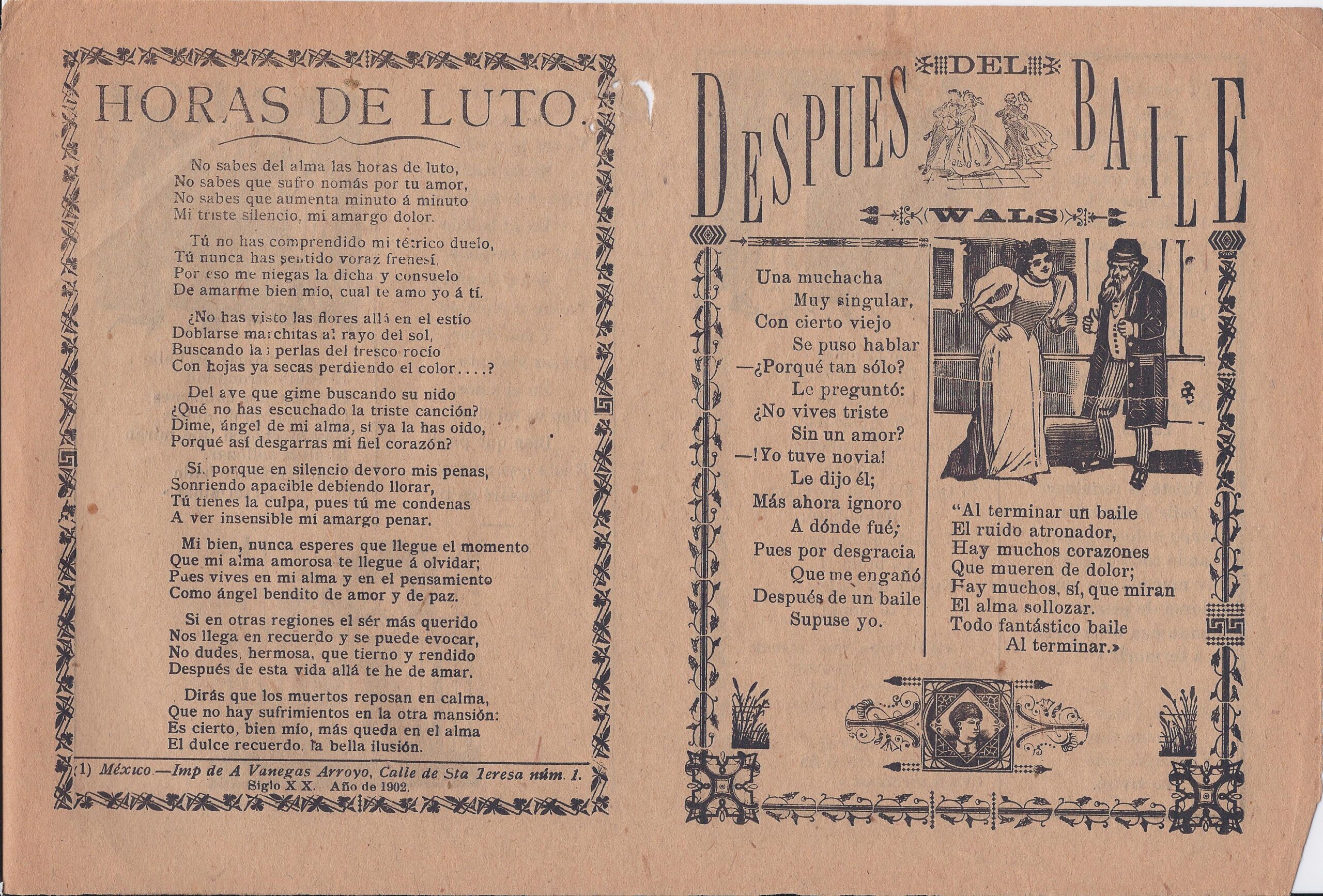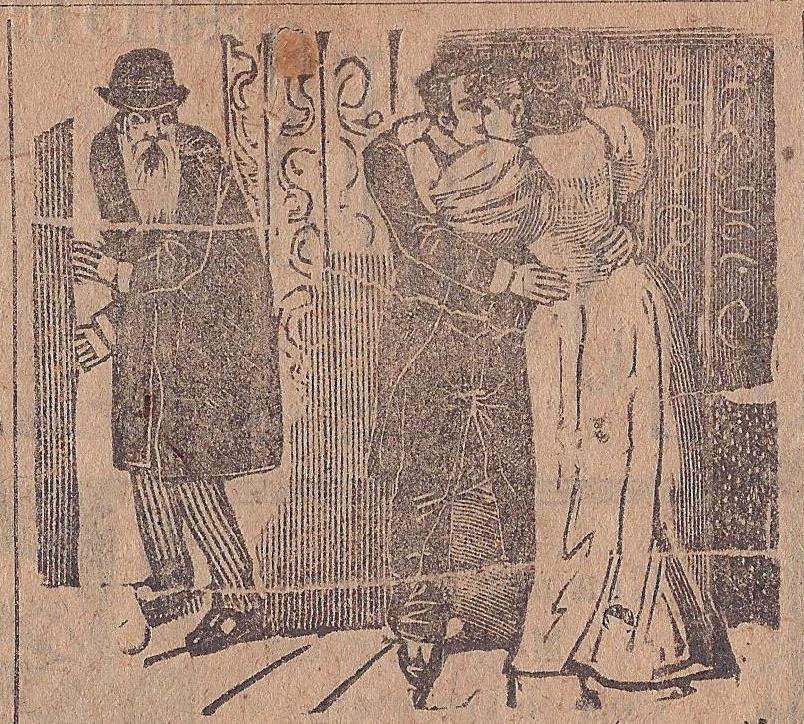Fusilamiento de Bruno Apresa /
Fusilamiento del Capitán Calapiz
Jose Guadalupe Posada
Engaving
13-3/4 x 9-1/2"
1943
Sold
Description
Jose Guadalupe Posada Engraving Execution Bruno Apresa 1943
Original engraving by Jose Guadalupe Posada published in 1943 by Ediciones Arsacio Vanegas Arroyo, grandson of Antonio Vanegas Arroyo. This image is known as Fusilamiento de Bruno Apresa aka Fusilamiento del Capitan Calapiz c. 1904 (The Execution of Bruno Apersa aka Capitan Calapiz). The image shows a man embracing his young child, while his daughter and wife cling to his legs in a heart-wrenching scene, when they know that his destiny is death by the firing squad that is tearing him away from his family.
Bruno Apresa was a soldier in the 200th Cavalry Regiment of the Mexican Army who was executed on April 29, 1904, in the Llanos de la Vaquita, near Mexico City. He was convicted of insubordination with physical violence against a superior officer and for causing the death of an officer. The crime occurred in January 1902 when Apresa was on guard duty at a corral in the town of Cuautitlán. According to the official version, Apresa refused to obey orders from his superior, Lieutenant José María Flores, and struck him with his weapon. Flores died from the injuries.
Apresa was tried and sentenced to death. His appeal to the Supreme Military Tribunal was rejected, and his execution was ordered by President Porfirio Díaz. Apresa's execution was a highly publicized event in Mexico. It became a symbol of the injustice and brutality of the Díaz regime. Apresa was executed by a firing squad made up of 20 men from the 24th Battalion of the Mexican Army. The execution was witnessed by a large crowd of people, including soldiers, civilians, and journalists. Apresa died instantly.
El fusilamiento de Apresa fue un evento trágico que conmocionó a México. Es un recordatorio de las injusticias que se cometieron durante el régimen de Porfirio Díaz.
The execution of Apresa was a tragic event that shook Mexico. It serves as a reminder of the injustices committed during the reign of Porfirio Díaz. The identity of Captain Calapiz is a subject of controversy. Some historians believe that Calapiz was a real officer in the Mexican army, while others believe he was a fictional character created by the illustrator José Guadalupe Posada. If Calapiz was a real character, it's likely that his name was changed to protect his identity. At that time, Díaz's government was highly repressive, and anyone considered a threat to the regime could be pursued and killed. Regardless of whether Calapiz was a real or fictional character, his execution serves as a reminder of the repression and injustice that occurred during the reign of Porfirio Díaz.
Antonio Vanegas Arroyo, a prominent Mexican printer and publisher in the late 19th century, was known for his ingenuity in reusing engravings by notable artists like José Guadalupe Posada and Manuel Manilla in various printed materials. A notable example of this practice is evident in the graphic representation of Bruno Apresa's execution, which shares the same image used in the ballad about the execution of Captain Calapiz. Vanegas Arroyo's reuse of graphic images was a clever strategy to save resources and disseminate different narratives through the press of that era.


